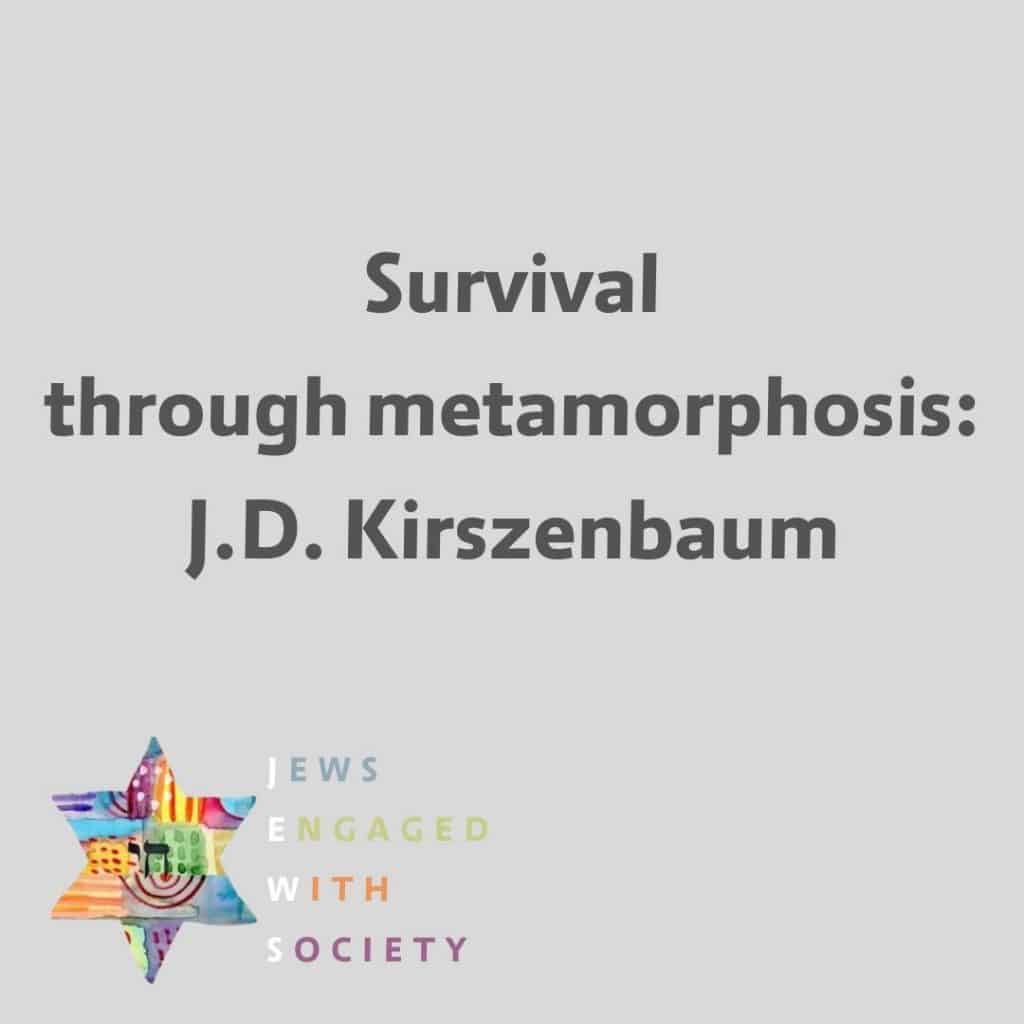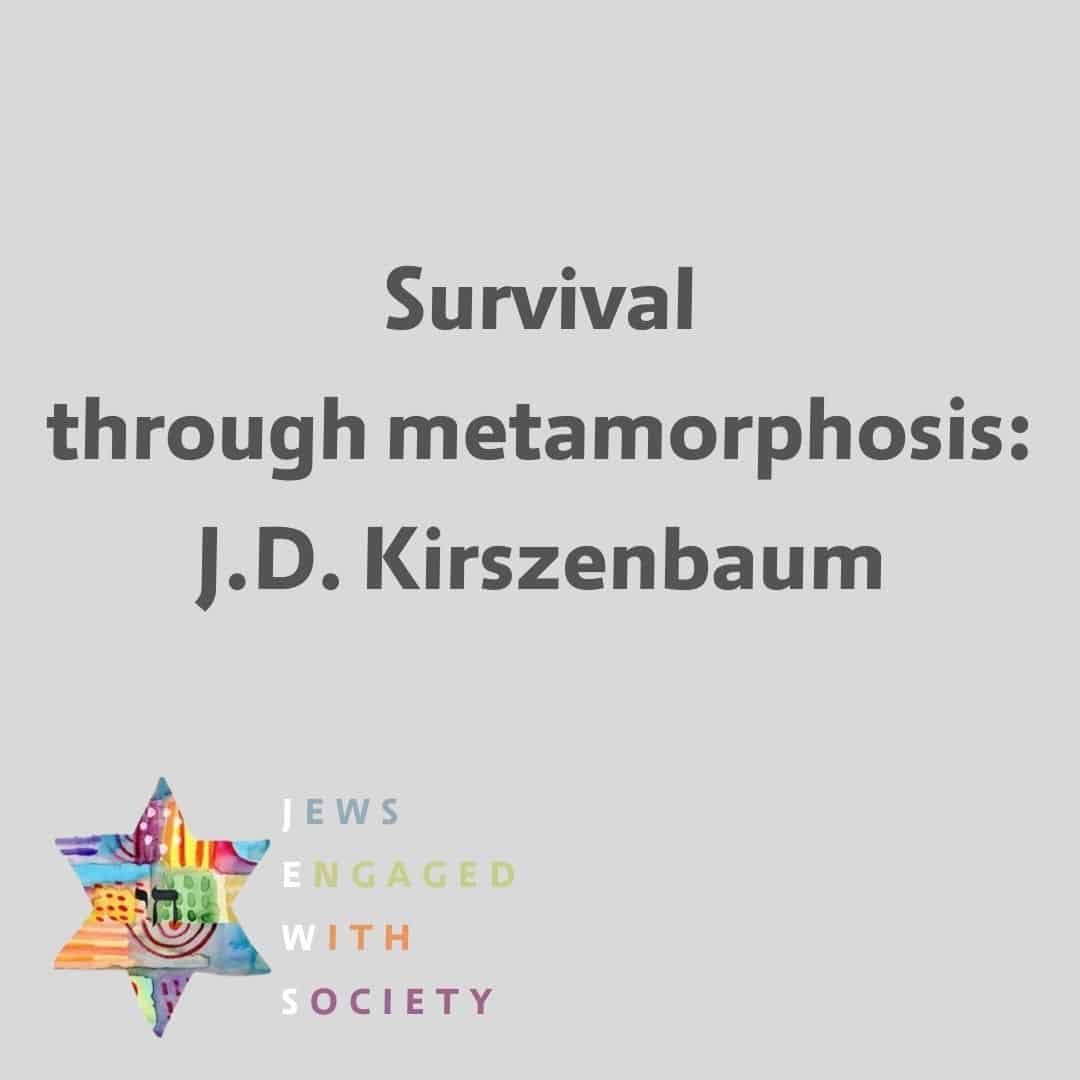
No artist metamorphized himself more often than J. D. Kirszenbaum.
These transformations were anything but a matter of choice.
Rather, they were dictated by Kirszenbaum’s needs to survive.
Survive artistically. And survive physically.
It is precisely these transformations that make Jezekiel David Kirszenbaum one of the most fascinating artists of the 20th century. Fascinating, because his facility and versatility enabled him to participate in many of the century’s seminal artistic movements and genres – Bauhaus, Neue Sachlichkeit, Expressionism, Ecole de Paris and magical realism.
And fascinating because this ever-changing output of works of consummate artistic expression was matched by surprising shifts of identity.
From a self-teaching artistic yeshiva boy struggling to emerge from the narrow bounds of shtetl life in turn of the century Russia. To a coal miner grinding out a gritty living in Germany’s Ruhr region. To a highly promising student at the leading school of art and architecture in the 1920s. To the toast of Berlin’s sophisticated salons. To the exile eking out in Paris a bare living – and turning out a torrent of great works. To the survivor of Nazi persecution. To the traveler seeking and finding new and radically different inspiration in exotic climes.
Conjoined, these metamorphoses constitute a telling record of artistic and Jewish life in Europe in the first half of the 20th century.
From the shtetl to the coal mines to the salons
The rage of Roaring 20s Berlin was Duvdivani. His caricatures of politicians, “society lions” and other prominent figures were wickedly telling, hysterically amusing and unabashedly progressive in tone – and thus widely popular among the city’s legion of the left wing.
Few who admired Duvdivani’s work knew the real name of the widely-admired caricaturist – Jezekiel David Kirszenbaum (Duvdivani is “cherry tree” in Hebrew). Ever fewer knew of the long and arduous path that had taken JDK from his humble shtetl in Staszow (then southwestern Russia, now southeastern Poland) to the drawing rooms of central Europe.
The path featured a number of amazing transformations.
The first was from a yeshiva boy and would-be artist into a coal miner. Born in 1900 in Czarist Russia, JDK was supposed to ply his father’s profession – a rabbi. But the young Jezekiel rebelled. He wanted to be an artist (and a revolutionary and a Zionist). Starting In his early teens, JDK began drawing anyone and everything that his young mind encountered. Scenes of village life. Theodor Herzl. Karl Marx.
To realize his dream of becoming an artist and to escape being drafted into the Polish army, JDK took in 1920 a bold step. He emigrated to Germany. To raise the funds necessary to study art, he took whatever work he could find. This led him to the Ruhr region’s dirty and dangerous coal mines.
Three years of hacking coal were followed the next amazing metamorphosis – into an eager student in what was at the time the capital of intellectual life in Europe: Weimar, home to the Bauhaus art academy. At it JDK’s teachers included Wassily Kandinsky (his greatest influence), Paul Klee and Lyonel Feininger.
Reminiscent of the dominant Expressionism and Neue Sachlichkeit movements and featuring the scenes from his childhood in the shtetl, JDK’s work quickly earned recognition among his peers – no mean feat when considering the competition.
Emboldened by this recognition, JDK moved in 1925 to Berlin and became part of the Association of Revolutionary Artists. While creating and exhibiting some of the era’s most talked-about works of political art, JDK pursued his “hobby” of caricaturing – one that made him – under his pseudonym of Duvdivani – a household name in intellectual Berlin.
JDK’s next transformation was necessitated by the Nazis. Their rise to power in 1933 caused him and his wife Helma Joachim, a progressive journalist, to flee to Paris.
The following six years were the most creative of JDK’s life. Making his staggering output of paintings even more remarkable: they were achieved under conditions of bitter poverty and desperate uncertainty. This output made JDK a prominent exponent of the Ecole de Paris, a position he held until the Nazis marched into France in 1940.
JDK survived – barely – the next five years of internment in camps and of hiding in the underground. Most of his work did not. Some 600 of his paintings and illustrations were destroyed by the Nazis and their henchmen.
Perhaps the most radical – and completely explicable – transformation took place in the aftermath of World War II. Kirszenbaum fled Europe and its painful memories and losses (his wife and most of his family had been murdered by the Nazis) for the tropics – Brazil and Morocco.
This flight provided JDK with a new and exuberant idiom and palette of expression. These new works joined with the pieces that had survived the Nazis’ destruction in making JDK one of post-war Europe’s coming artists. This growing recognition was cut short by JDK’s death from cancer in 1954.
J. D. Kirszenbaum: his life and exhibitions
https://www.kirszenbaum.com/chronology
J.D. Kirszenbaum: his work
https://www.kirszenbaum.com/artistic-periods
For further information:
Terry Swartzberg
sayhi@swartzberg.com
